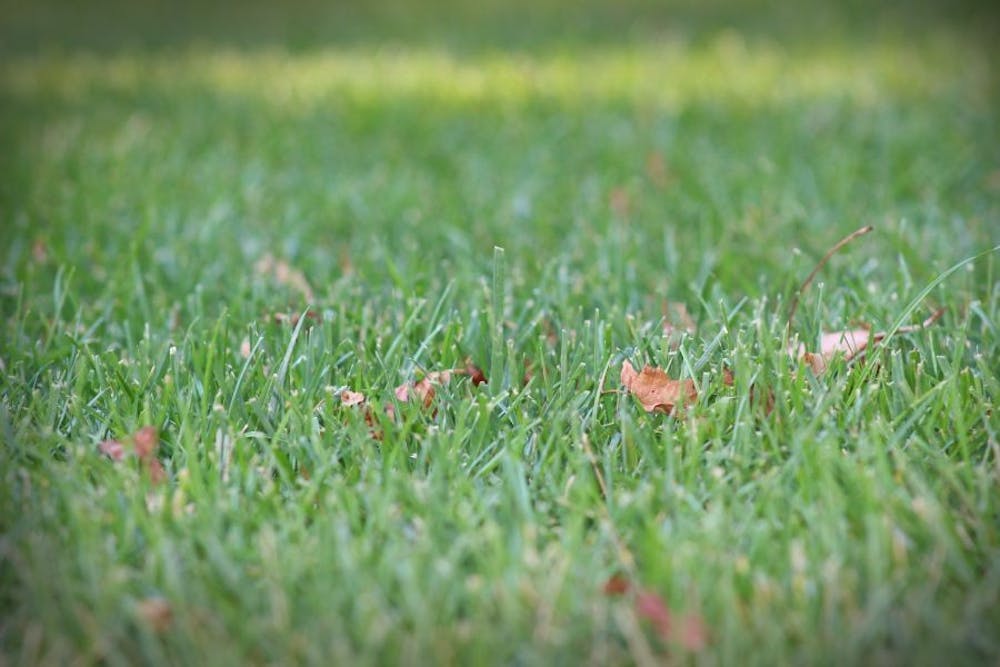The following piece, written by the editorial editors, reflects the majority opinion of the editorial board.
After seeking 35 acres of available land north of Yager Stadium, Miami's new Food Studies Institute was granted seven, a mere fraction of the total plot, which includes some of the most fertile soil in the county.
Since the area's acquisition in 2007, Miami University has set it aside for a department of misplaced interest - intercollegiate athletics.
As of now, it is unclear why the athletic department wants this land or how athletics intends to use it. There are no blueprints for buildings, no time lines drawn up for construction, no donors waving money.
The Food Institute intends to use the small segment they received to establish an experiential garden, which will teach sustainable practices and techniques of organic farming.
Promoting these experiences would mix up the monotony of a typical lecture and get students out of the classroom and outdoors. By getting their hands dirty planting and harvesting crops, they would understand the importance of farming and would feel satisfied that they helped create something useful.
So, instead of devoting the area to unique educational opportunities, we are just going to build another sports field . . . someday.
Why are we reserving this land for uncertain uses when we could be doing something useful with it right now?
Miami is making a mistake. Instead of funneling money into athletics, something most schools have, why don't we do something that would set us apart? We have an opportunity to create a curriculum not many other schools have, something that would put us a step above our competition, and would make students, alumni and the world of higher education take notice.
Recently, Miami has focused time, money and energy revamping and refurbishing athletic arenas. From a renovation of McKie Baseball Field at Hayden Park, to the addition of the $14 million Dauch Indoor Sports Center, athletics seems to be the getting most of Miami's attention.
While quite a bit of the money that funds these projects comes from alumni donations designated for a certain use, these donations are nonetheless solicited. Miami prioritizes sports centers and asks for funds to complete athletically oriented projects.
Furthermore, once these ventures are complete, they aren't automatically paid off. Student fees support maintenance and upkeep of these buildings, arenas and fields, whether students use them or not.
In April of this year, The Miami Student reported that over 50 percent of the $1,860 general fee Miami undergraduates pay goes toward athletics. The exact amount each student gives to intercollegiate sports is $997.
According to the report, students pay "a combined $350 for the Rec center and Goggin Ice Center, leaving $513 to be allocated to Armstrong, Shriver, Millet, Health Services, Transportation Services, ASG, Lecture Series, more than 240 other student organizations and several other services."
If Miami had an exceptional athletic program, this might make sense. If athletics were our main source of revenue, bringing in enough money to distribute over areas like academics, arts and other clubs and organizations, this would be a great idea. But we don't have that type of athletics program, and it doesn't bring us that kind of money.
Increased support for the Food Institute would positively impact the university as a whole. The program would be interdisciplinary, weaving together anthropology, biology and geography, and working with the Myaamia Tribe to grow native plants.
The benefits would reach far beyond the Miami and Oxford communities as well - as a nation, we are in the midst of an agricultural crisis.
Every five years, the United States Department of Agriculture surveys farmers across America. According to the most recent census, taken in 2012, the average age of farmers has increased, while the total number of farmers has decreased.
In 2012, the average farmer was 58.3 years old, up from 55.3 in 2002 and 53.3 in 1992.
The number of principal farmers - who, as compared to second and third farmers are more likely to be primarily responsible for the functioning of the farm and to consider farming their full-time occupation - dwindled 4.3 percent from 2007 to 2012.
There is a misconception that farming is a job for the uneducated or unskilled, that it is an antiquated form of labor we no longer need. The reality is quite the opposite - farming involves specialized training, research and techniques to be done effectively. It is a necessary part of our society and one that is in danger of becoming obsolete.
People are largely uninformed about where their food comes from, and what's more disappointing is that they don't seem to care. Interest in sustainable farming is not what it once was.
Miami's Food Institute has the potential to change that, if we let it.
Do we really need another sports facility? Do we really something geared toward only a small portion of the student body? Do we need something that other schools already have?
Or, do we want something that we can all use, that will benefit the community and will make Miami unique?

